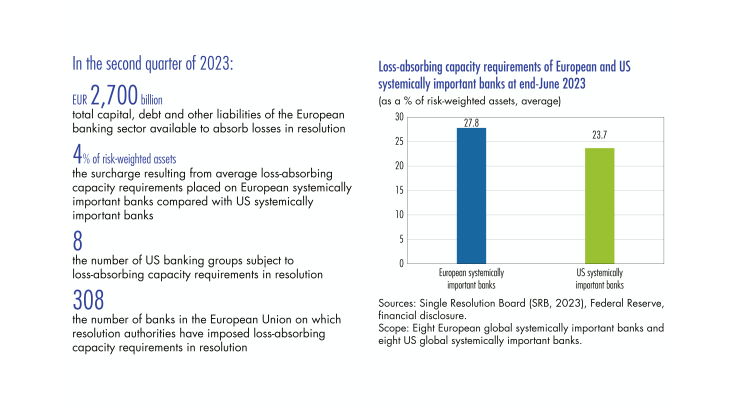1 Loss absorption for the resolution of banking crises: European Union and US regulatory frameworks
Bank resolution: a means of managing failures that is covered by a special legal regime
The need for a new framework to manage banking crises was identified as an international priority in the aftermath of the global financial crisis of 2007 08. The Financial Stability Board (FSB) drew up a standard for resolution regimes (FSB, 2011), which was endorsed by the G20 at the Cannes summit in November 2011.
A bank may be declared to be failing if it suffers losses that deplete its capital or if it is no longer able to honour its debts as they fall due. But banks are not like other businesses: they distribute credit, look after clients’ savings and manage means of payment. In some cases, subjecting them to a standard insolvency procedure such as judicial liquidation could disrupt these activities, which play a critical role in the economy, and threaten financial stability.
Bank resolution differs from judicial liquidation in two ways.
First, the resolution procedure is exceptional. It may be employed only if winding up the bank would not meet the public interest to the same extent (see diagram below). Second, the procedure is not entrusted to a judge, but rather to an ad hoc administrative authority with special legal powers. The resolution authority may choose between two types of solution in the event of a bank failure (Benahmed and Houarner, 2023). It can require the failing bank’s shareholders and creditors to make contributions to recapitalize the institution and maintain its activities (bail in). Or it can organise for the bank’s activities to be transferred to an acquiring entity or a bridge bank. Resolution is thus an important means of managing failing banks that limits the use of public funds as well as moral hazard. In so doing, it prevents the “too big to fail” issue from arising.
Resolution regimes in Europe and the United States
The European Union (EU) complied with the international standard on resolution regimes with the adoption of Directive No. 2014/59/EU of 15 May 2014 establishing a framework for the recovery and resolution of credit institutions and investment firms. While single supervision forms the first pillar of the euro area’s Banking Union, the second pillar is the Single Resolution Mechanism, comprising a European authority, the Single Resolution Board (SRB), along with national resolution authorities.
